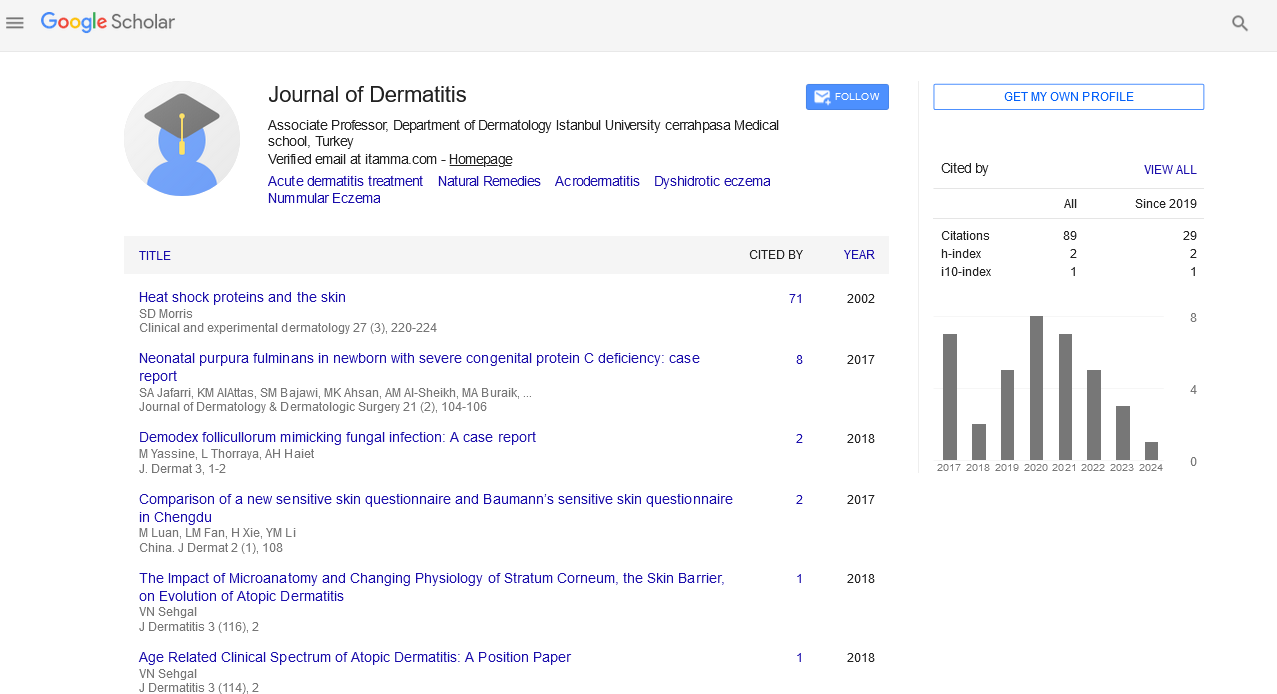Indexed In
- RefSeek
- Hamdard University
- EBSCO A-Z
- Euro Pub
- Google Scholar
Useful Links
Share This Page
Journal Flyer

Open Access Journals
- Agri and Aquaculture
- Biochemistry
- Bioinformatics & Systems Biology
- Business & Management
- Chemistry
- Clinical Sciences
- Engineering
- Food & Nutrition
- General Science
- Genetics & Molecular Biology
- Immunology & Microbiology
- Medical Sciences
- Neuroscience & Psychology
- Nursing & Health Care
- Pharmaceutical Sciences
Opinion - (2023) Volume 8, Issue 2
Significances of Skin Cancer and their Manifestations
Oh Se Hyun*Received: 01-Mar-2023, Manuscript No. JOD-23-20046; Editor assigned: 03-Mar-2023, Pre QC No. JOD-23-20046 (PQ); Reviewed: 20-Mar-2023, QC No. JOD-23-20046; Revised: 27-Mar-2023, Manuscript No. JOD-23-20046 (R); Published: 03-Apr-2023, DOI: DOI: 10.35248/2684-1436.23.8.186
Description
Skin cancer is one of the most common types of cancer worldwide, affecting millions of people each year. It is a type of cancer that develops from the cells of the skin, and it can occur anywhere on the body. Skin cancer can be caused by a variety of factors, including exposure to Ultraviolet (UV) radiation, genetics, and certain environmental factors.
The most common types of skin cancer are basal cell carcinoma, squamous cell carcinoma, and melanoma. Basal cell carcinoma is the most common type of skin cancer and accounts for approximately 80% of all cases. Squamous cell carcinoma accounts for about 16% of all cases, while melanoma accounts for approximately 4% of all cases. Although melanoma is less common than other types of skin cancer, it is the most dangerous and can be fatal if not detected and treated early.
The main cause of skin cancer is exposure to UV radiation from the sun or tanning beds. UV radiation damages the DNA in skin cells, which can lead to mutations that cause cancer. People with fair skin, light-colored hair, and light-colored eyes are more susceptible to skin cancer, as their skin has less natural protection against UV radiation. Other risk factors for skin cancer include a family history of the disease, a weakened immune system, and exposure to certain chemicals.
Prevention is the key to reducing the risk of skin cancer. It is important to protect skin from UV radiation by wearing protective clothing, such as long-sleeved shirts and hats, and by using a broad-spectrum sunscreen with an SPF of 30 or higher. Avoiding the sun during peak hours, typically between 10 a.m.and 4 p.m., can also help reduce the risk of skin cancer.
Early detection is also crucial for successful treatment of skin cancer. Regular self-examinations and visits to a dermatologist can help identify any potential skin cancer early. Warning signs of skin cancer include changes in the color or size of a mole or other skin lesion, the development of new moles or lesions, and any lesion that does not heal within a few weeks.
The (DNA) Deoxy Ribo Nucleic Acid in skin cells is harmed by ultraviolet (UV) light, which is the main cause of skin cancer. Sunlight is the primary UV light source.The Earth's atmosphere blocks out UV, which is the most harmful to skin. Pale skin is harmed by UV and UV over time, which increases the risk of skin cancer growth. Although it is believed that UV is the primary cause of all skin cancers, it is not yet known whether UV also contributes to the development of melanoma. The chance of acquiring skin cancer is also increased by artificial light sources like sunlamps and tanning beds.People of all ages are more likely to develop melanoma when they are repeatedly burned by the sun or other artificial light sources.
In conclusion, skin cancer is a serious and potentially lifethreatening disease that affects millions of people each year. Exposure to UV radiation is the main cause of skin cancer, but there are other risk factors as well. Prevention and early detection are key to reducing the risk of skin cancer and improving the chances of successful treatment. By taking steps to protect skin and getting regular skin checks, it can help reduce risk of developing skin cancer and ensure early detection if it does occur.
Citation: Hyun OS (2023) Significances of Skin Cancer and their Manifestations. J Dermatitis.8:186.
Copyright: © 2023 Hyun OS. This is an open-access article distributed under the terms of the Creative Commons Attribution License, which permits unrestricted use, distribution, and reproduction in any medium, provided the original author and source are credited.

